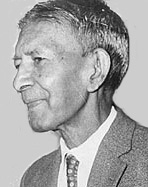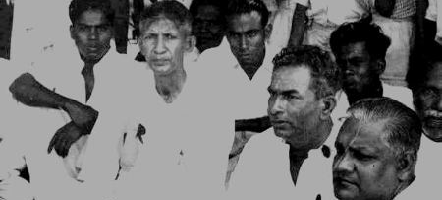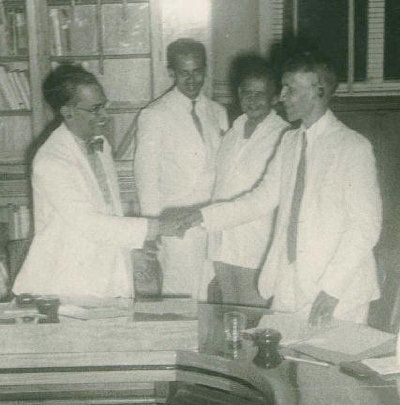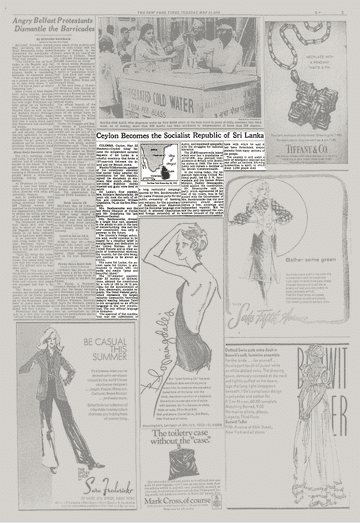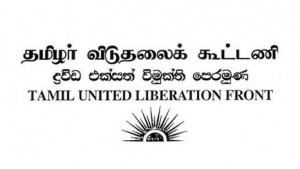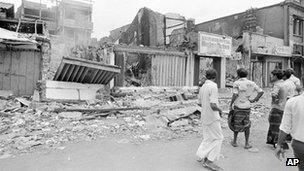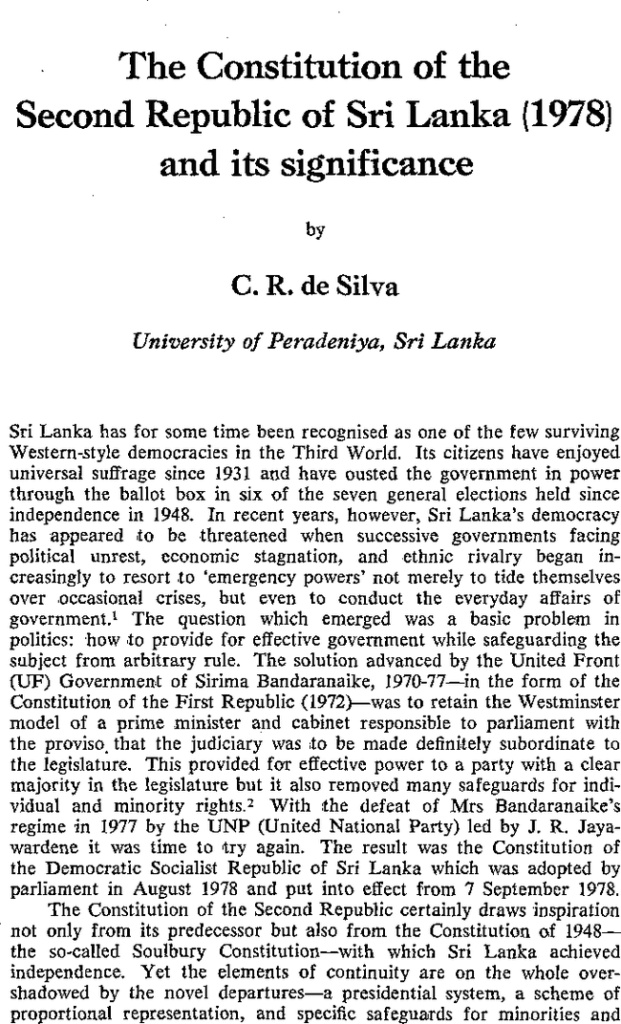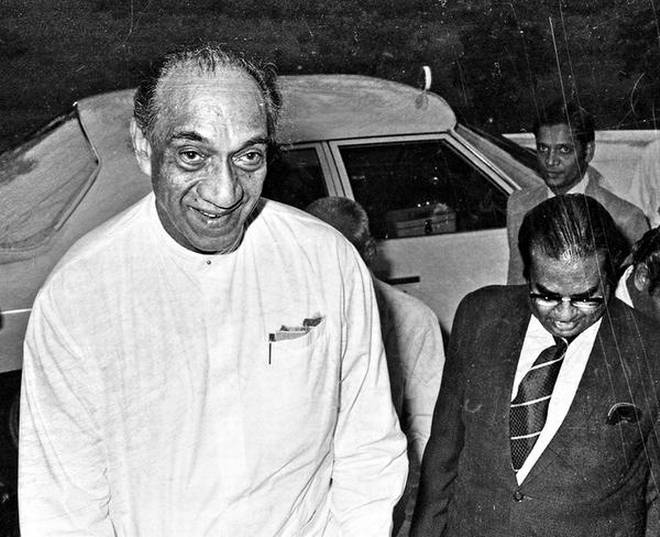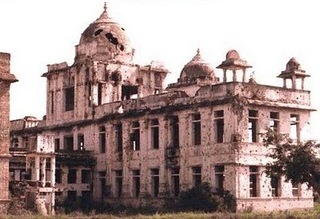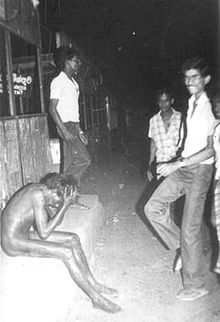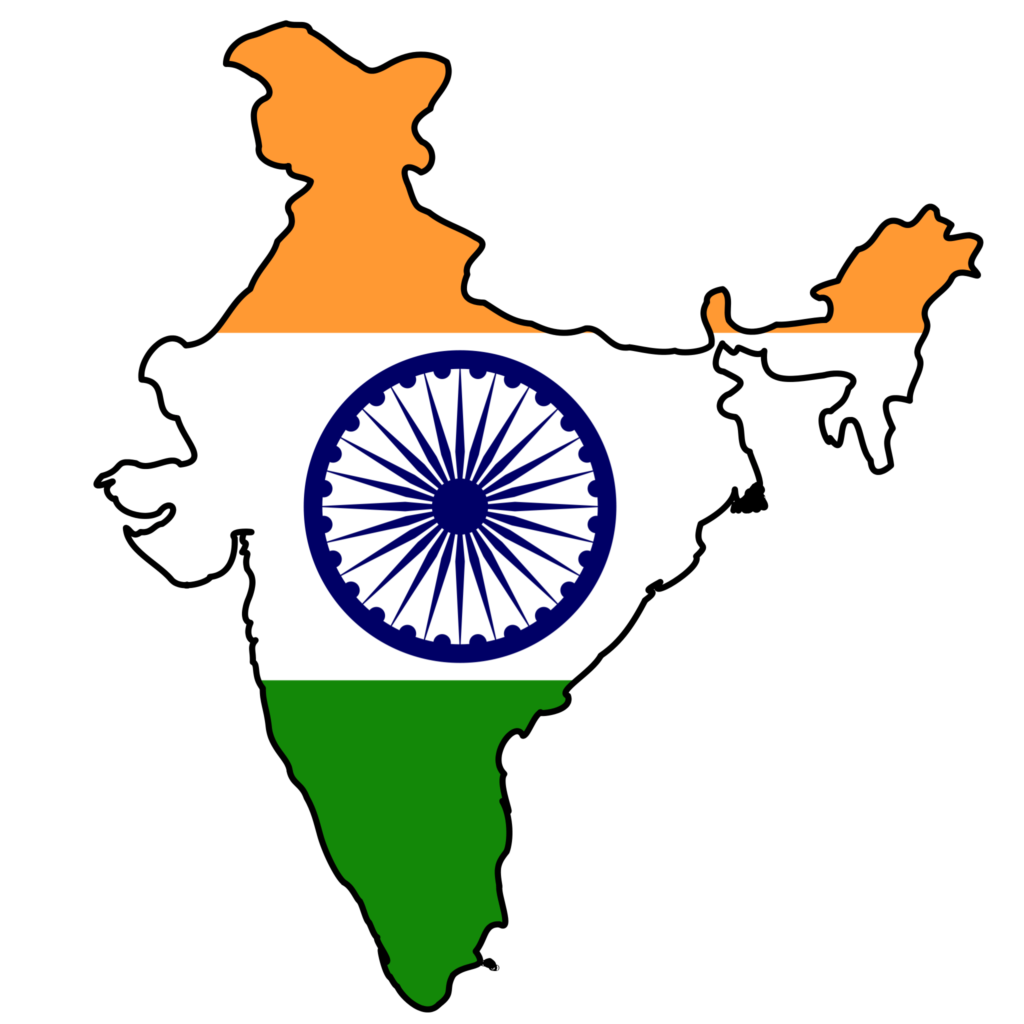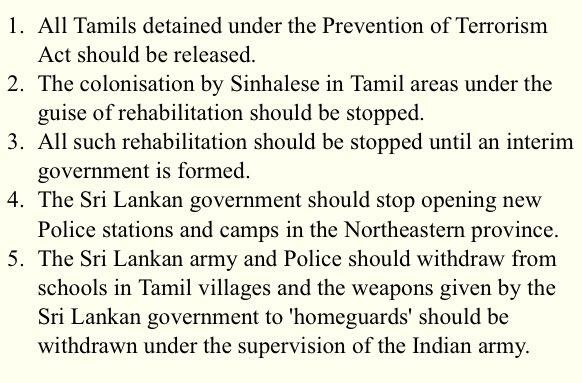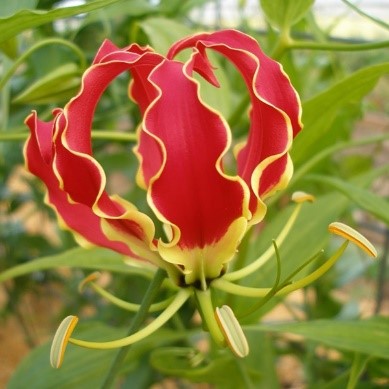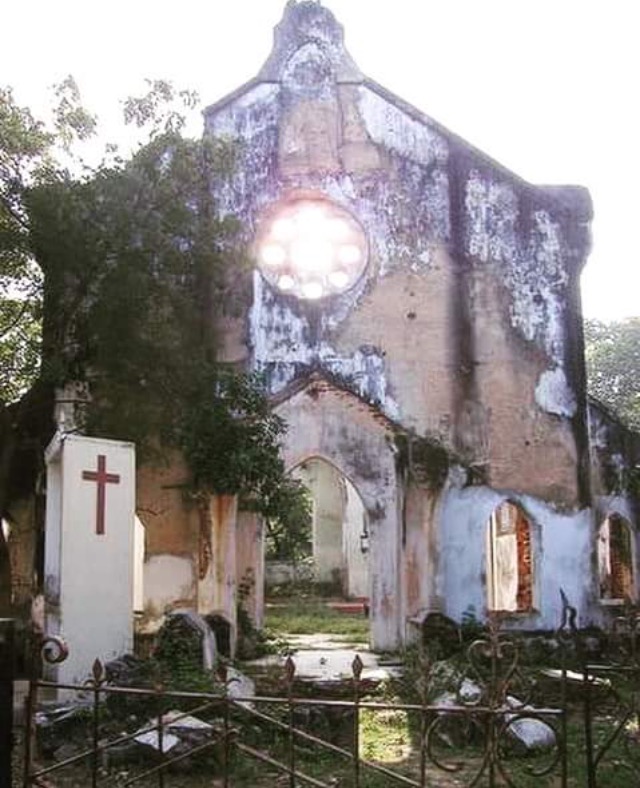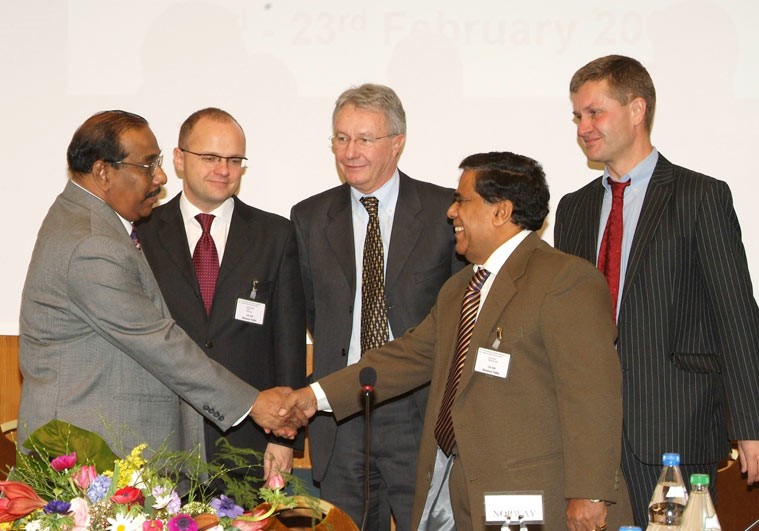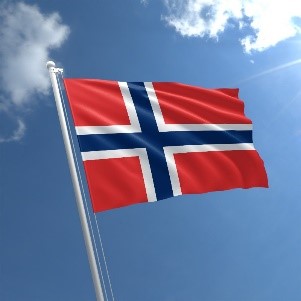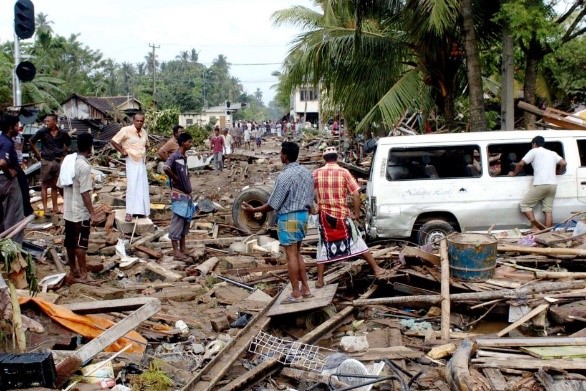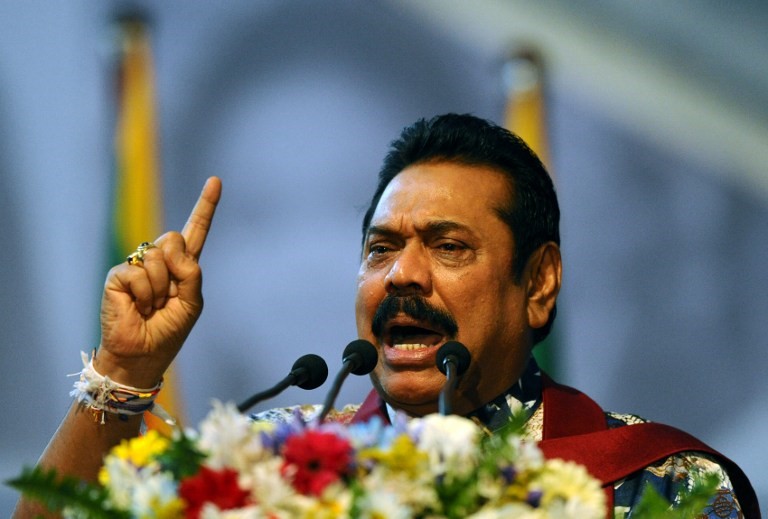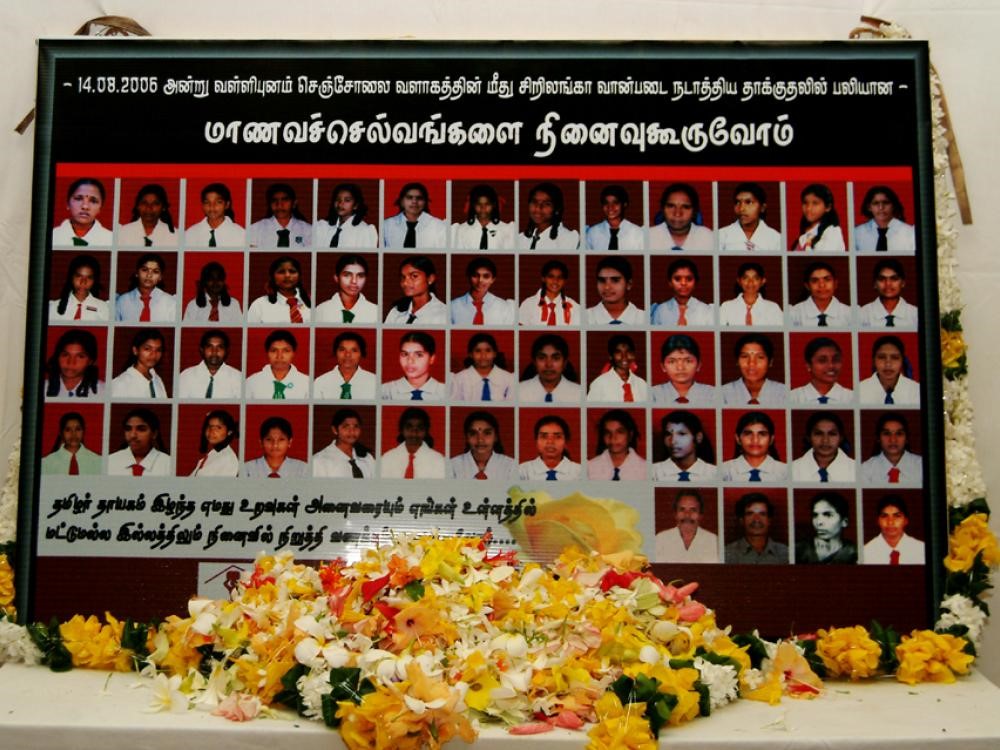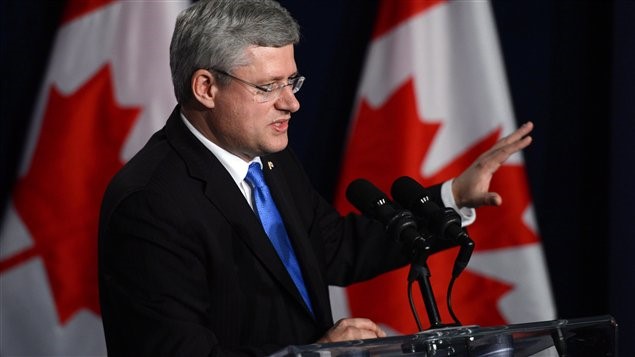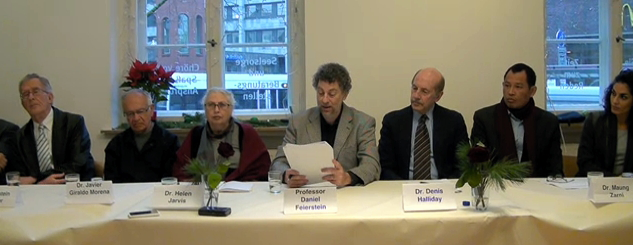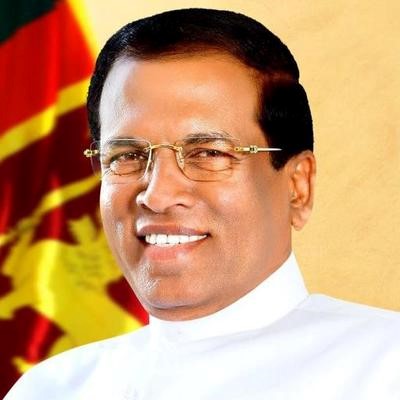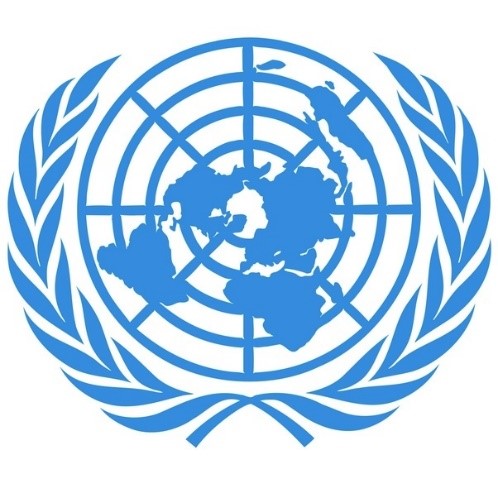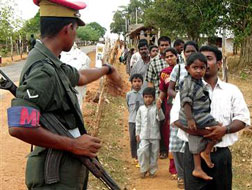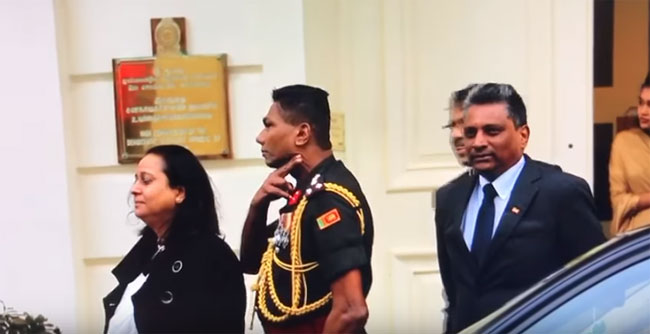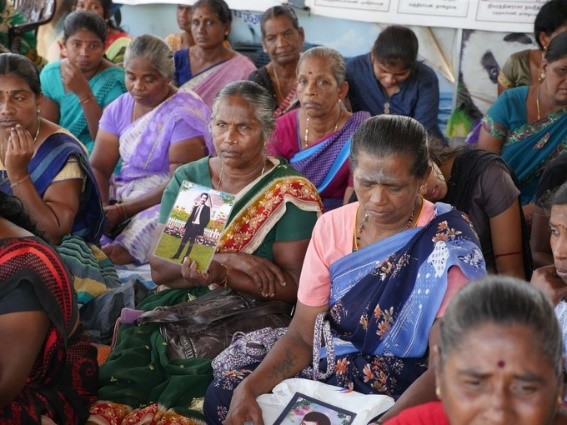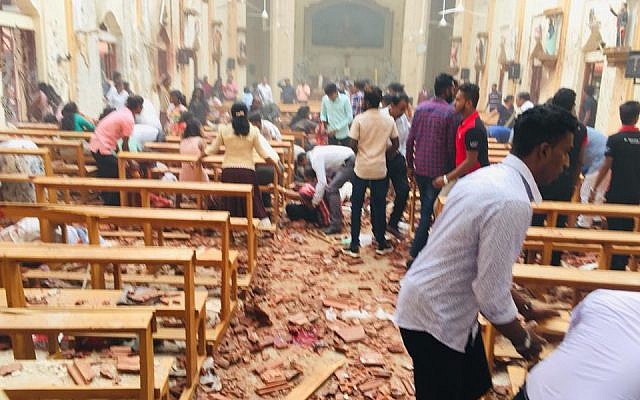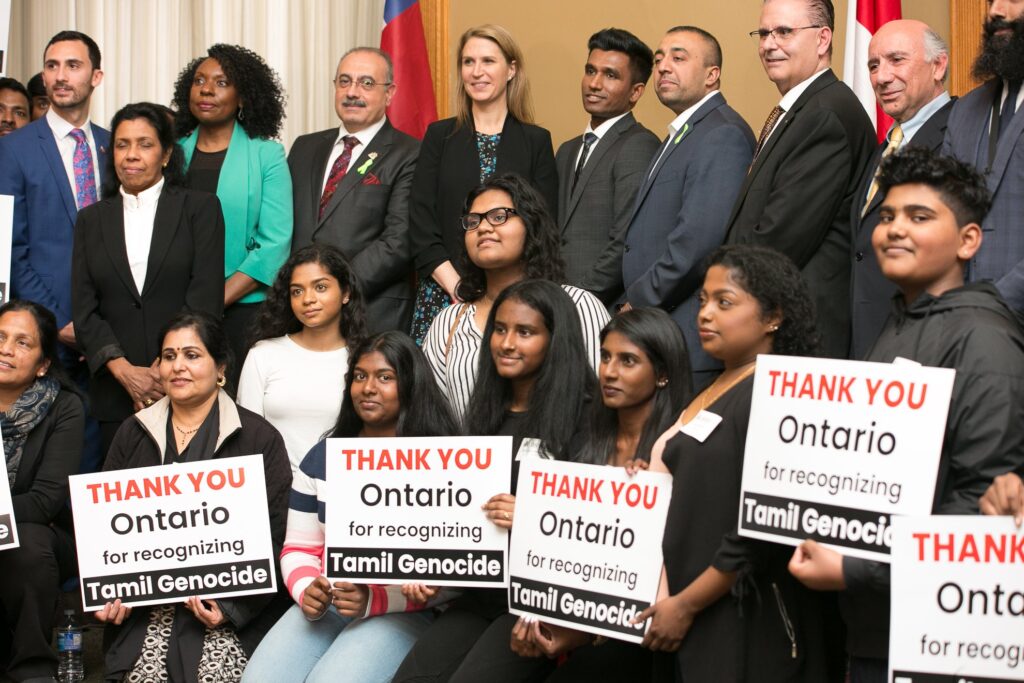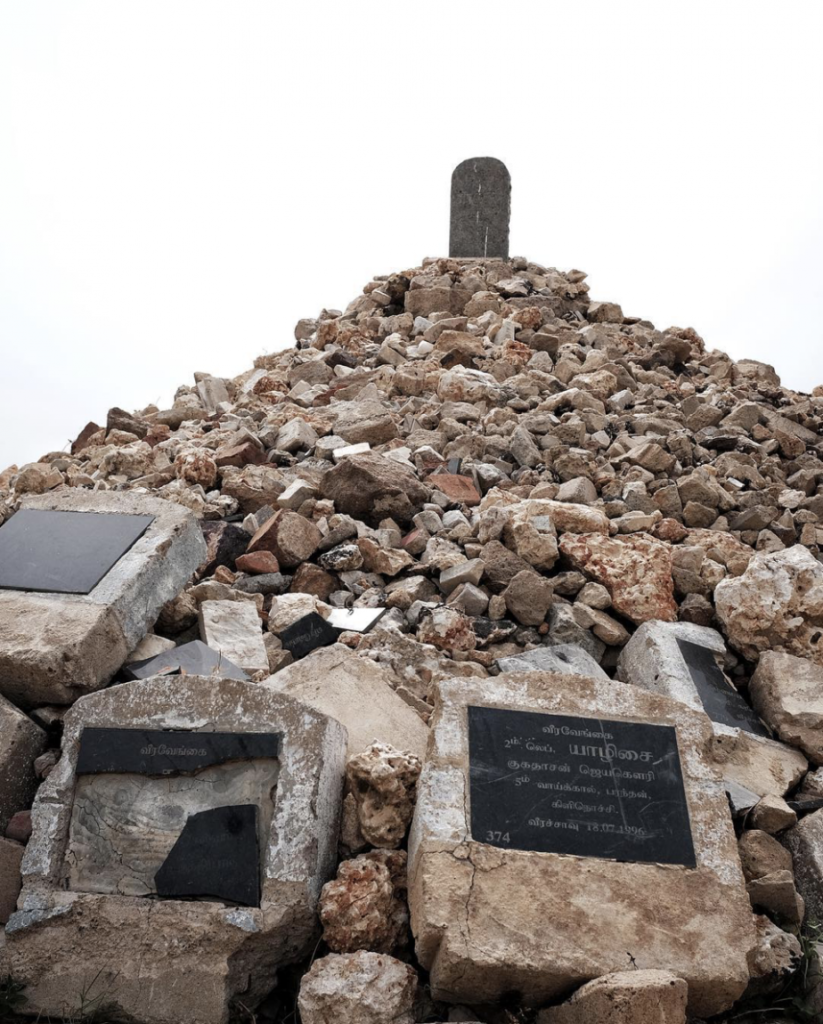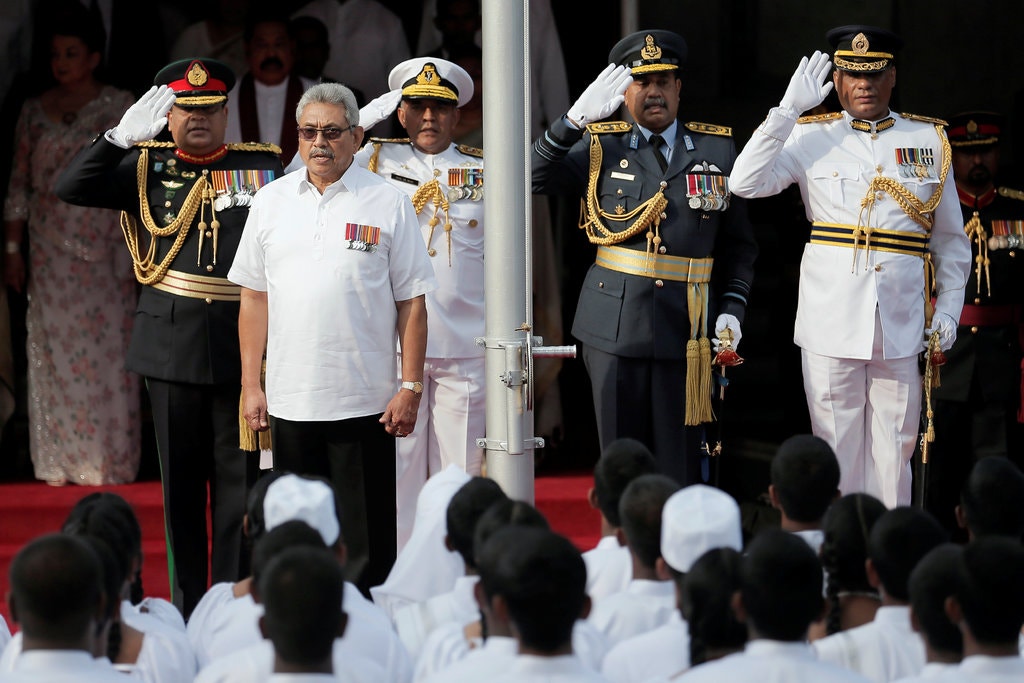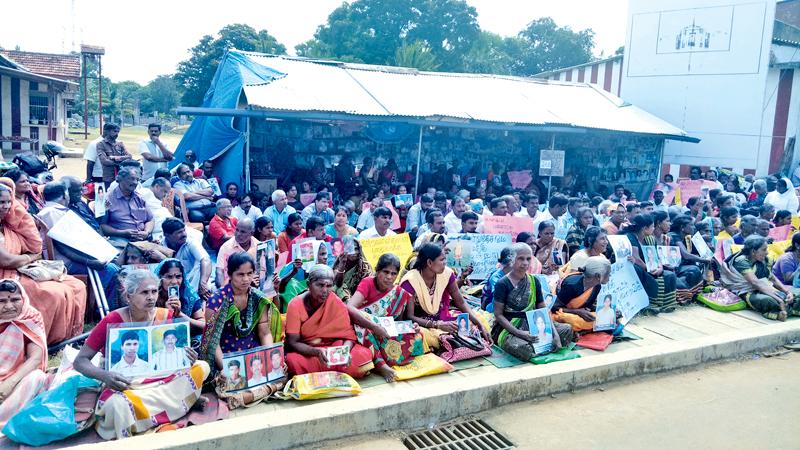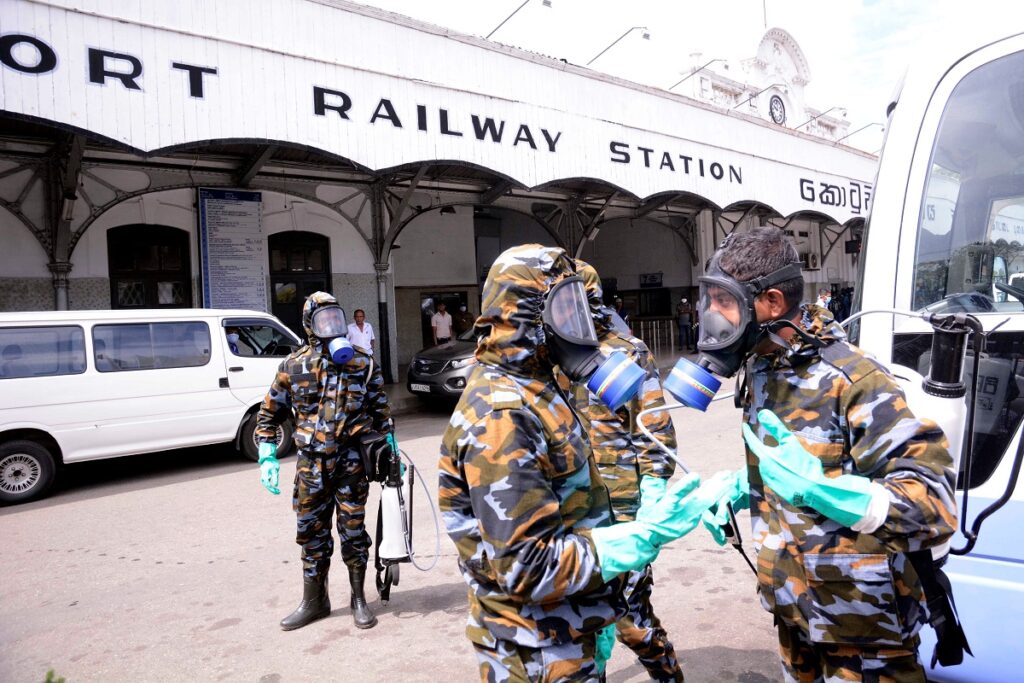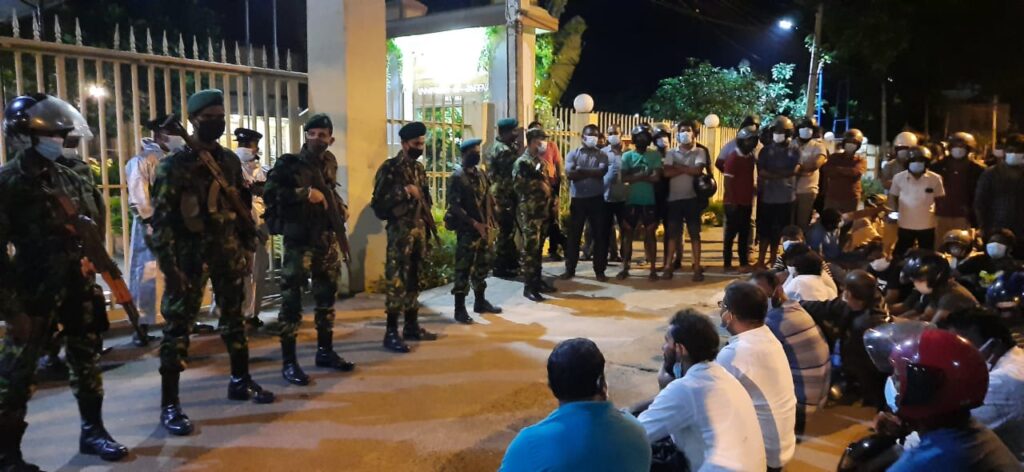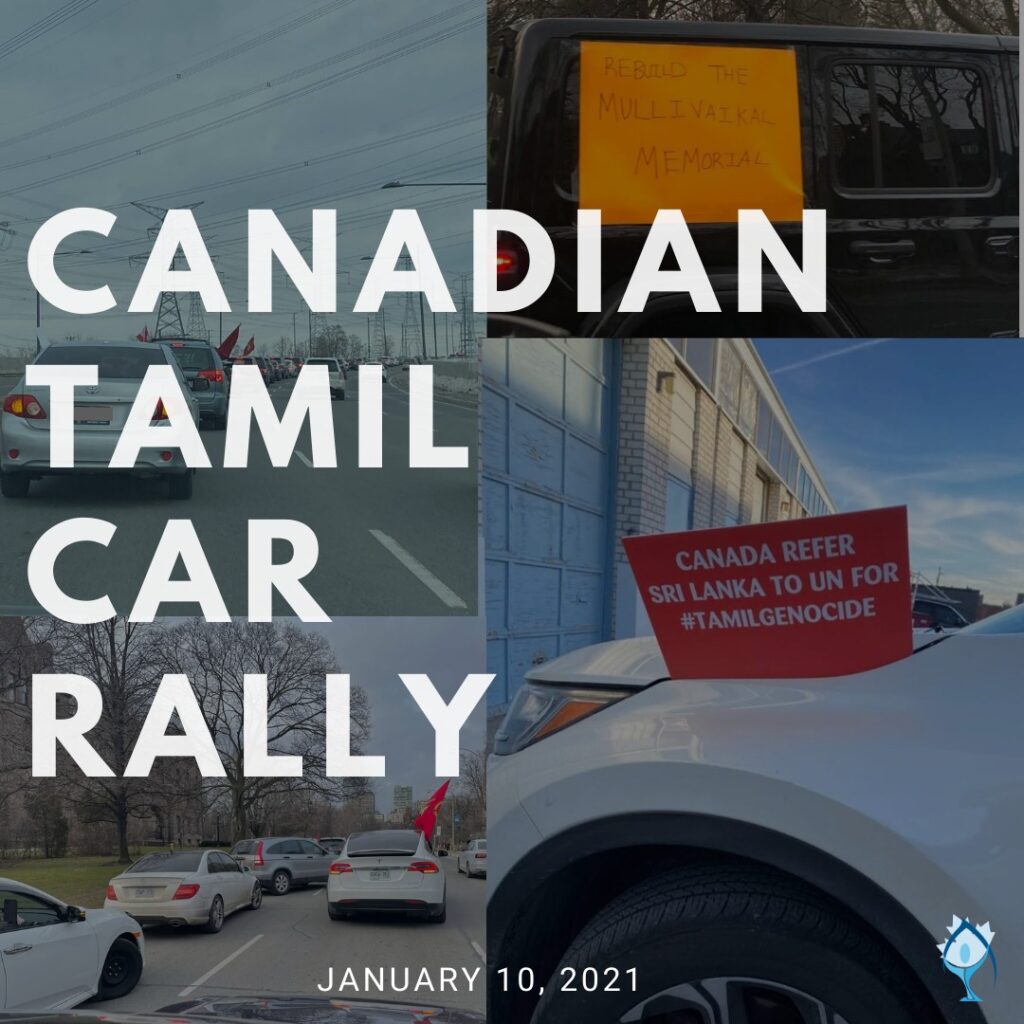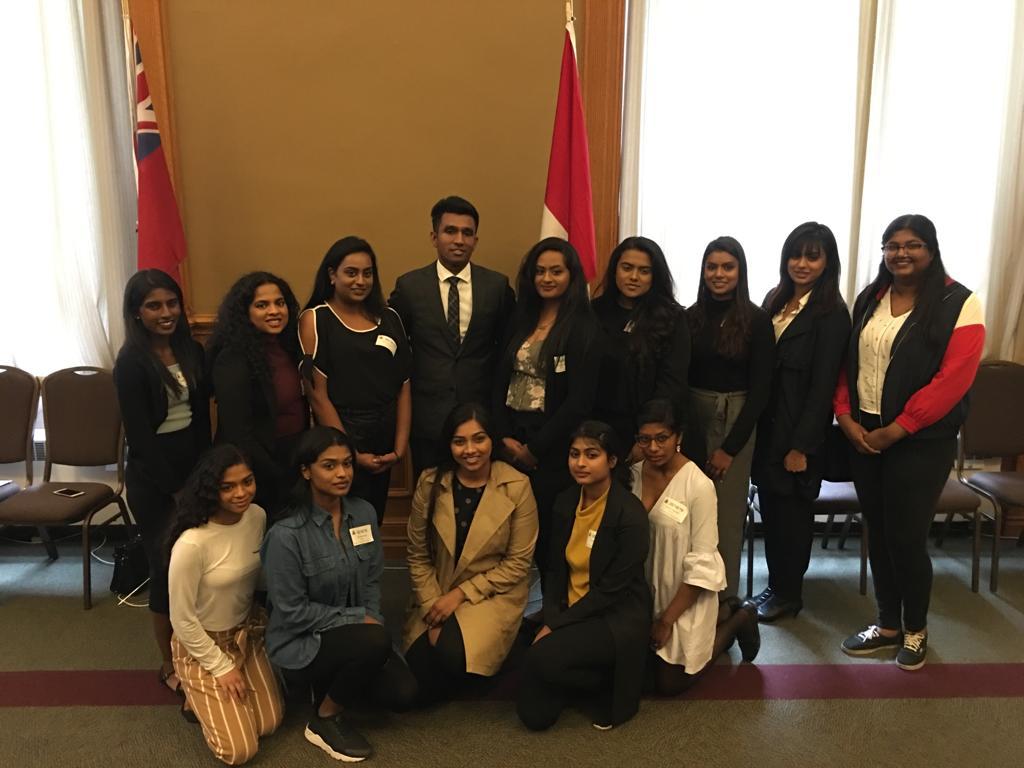
The Tamil Genocide Takes Root as Ceylon Gains Independence
The British leave and Ceylon becomes a self-governing dominion with a government dominated by the Sinhalese elite assuming power. Passage of the Citizenship Act that makes more than a million Tamil plantation workers of Indian..Read More
Sinhala Only Act and the 1958 Anti-Tamil Pogrom
UNP ousted from power in the general elections by SLFP, riding on the wave of Sinhalese- Buddhist nationalism with strong anti-Tamil overtones. Sinhalese is proclaimed as the sole official language of Ceylon as the Official..Read More
Prime Minister Bandaranaike and FP leader Chelvanayagam sign a historic agreement (the B-C Pact) on a federal solution, devolving wide-ranging powers to the Tamil-majority North and East Provinces. A major anti-Tamil pogrom breaks out in Sinhala-majority..Read More
From Ceylon to the Republic of Sri Lanka: The Continuation of Sinhala-Buddhist Chauvinism
Prime Minister Bandaranaike is assassinated by a Buddhist monk.
UNP’s Dudley Senanayake forms a government with the help of FP and other parties. The Dudley-Chelva agreement, which amounts to a diluted version of the B-C pact, is signed. The agreement is abandoned without being..Read More
Ceylon becomes a Republic on May 22 and is officially renamed The Republic of Sri Lanka. The United Front government enacts a Sinhalese-supremacist “Republican Constitution” for the country, which makes Buddhism the de facto state..Read More
TUF is renamed Tamil United Liberation Front (TULF) and passes the “Vaddukodai resolution” to restore a “free, sovereign, secular, socialist State of Tamil Eelam based on the right to self-determination” to safeguard the very existence..Read More
August 12-20, 1977
Severe anti-Tamil pogroms occur immediately after elections, killing hundreds of Tamils; tens of thousands of Tamils from Sinhalese-majority areas, flee North to the Tamil regions.
President JR Jayewardena is Elected, Bringing an Upsurge in Anti-Tamil State Violence
Death of ailing Thanthai Chelvanayagam. J.R. Jayewardena becomes Prime Minister when UNP routs SLFP in the general elections to come back to power with a thumping five-sixths majority in parliament.
The Destruction of the Jaffna Library, Black July, the 6th Amendment and Outbreak of War
The Jaffna Public Library is burnt down by the Sri Lankan armed forces, under the direction of two government ministers, Gamini Dissanayake and Cyril Mathew.
Black July 1983: The most horrific anti-Tamil pogrom spreads throughout the island
More than 3,000 Tamils killed and over 150,000 become refugees, many fleeing the country to India and the West. Prison guards allow Sinhalese génocidaires into the wards holding Tamil political prisoners- 53 Tamil political prisoners..Read More
1987- India’s Intervention
The Indian military performed a peacekeeping operation in Sri Lanka between 1987 and 1990. It was formed under the mandate of the 1987 Indo-Sri Lankan Accord that aimed to end the Sri Lankan Civil War..Read More
September 15, 1987
Thileepan (Rasaiah Parthipan) began his fast at the Nallur Murugan Temple, Jaffna. His main objective was to bring awareness and appeal to the Indian government to honour pledges made to the Tamil people. Thileepan was..Read More
1st Maveerar Naal – November 27,1989
Marks the 1st Maveerar Naal. Maveerar Naal is a day of remembrance and is held each year on November 27th, the date on which the first LTTE cadre, Lt. Shankar is said to have died..Read More
1995-2000- Sri Lankan Government Attacks
Several bombings and killings on civilians by the government took place from 1995. On July 9, 1995 the Sri Lankan Air Force bombed the Church of Saint Peter and Saint Paul in Navaly as an..Read More
September 22, 1995
Sri Lankan Air Force bombed Nagarkovil Maha Vidyalaym, a government school in Jaffna. 39 civilians died many of which were school children. The staff of the school informed the sighting of the Sri Lankan Air..Read More
February 2000- Norway Begin Negotiations
In 2000, an estimated one million people in Sri Lanka were displaced within the country, living in camps or homeless and struggling for survival. In February 2000, Norway was asked by both sides to intervene..Read More
February 2002- Ceasefire
The Government of Sri Lanka and the LTTE sign a ceasefire which was notified by the Norwegian Minister of Foreign Affairs. The two sides formalized a Memorandum of Understanding (MoU) on February 22nd, 2002, and..Read More
December 26, 2004 – Tsunami
One of the deadliest natural disasters in recorded history. Indonesia was the hardest-hit country, followed by Sri Lanka, India and Thailand. Over 30 000 deaths in Sri Lanka alone.
November 2005- The Rajapaksa Regime
Mahinda Rajapaksa became the 6th President of Sri Lanka. He quickly appointed his three brothers to run important ministries and other political positions, regardless of their merit. The Rajapaksas have been accused of being authoritarian,..Read More
August 14, 2006- Sencholai Massacre
The Sencholai children’s home had been designated as a humanitarian zone. However, the government found it to be the perfect cite to target the future of Tamils. 53 students and 3 staff members were killed..Read More
January 2, 2008- End of Ceasefire
On January 2, 2008 the Sri Lankan government officially abrogated the ceasefire agreement.
November 2008- Army Shelling Continues
Crucial infrastructure meant to support the high-needs IDP population is targeted by Sri Lankan Army shelling. Kilinochchi is consistently shelled, with hospitals, IDP settlements and main roads, as frequent targets. The number of casualties continue..Read More
December 2008- Use of Banned Weapons
In December 2008, reports begin to emerge regarding the use of cluster munitions on civilian areas. The use of banned weapons on civilian targets becomes a systemic practice by the Sri Lankan Army. Meanwhile, in December..Read More
April 2008- ‘Zone of Peace’ Attacked
The Sri Lankan Army (SLA) focus their operations on capturing Mannar by shelling Madhu Shrine, a holy Catholic pilgrimage site that houses a statue of ‘Our Lady of Madhu’. The area surrounding the shrine was..Read More
July 2008- Removing the “Witnesses”
July 2008 the Government of Sri Lanka instructs the Sri Lankan Telecom Department to cut 500 phone lines that connected Kilinochchi to the outside world. The phone lines that were cut belong to civilian-serving institutions..Read More
Fall/Winter 2008- Food Insecurity
In early 2008, the Government of Sri Lanka placed increased limitations on the number of transport vehicles allowed into Vanni. By late 2008, these restrictions cause a food insecurity crisis that is compounded by the..Read More
November 2008- Displacement and Food Insecurity
The restriction on food items coming into Vanni must also be judged in the backdrop of this loss of local rice production caused by displacement.” By the end of November 2008, 75% of the entire..Read More
May 2009- Systematic Executions
Systematic and widespread executions of people associated with or suspected of being associated with the LTTE. The Sri Lankan Security Forces collected ‘trophy’ photos and videos of captured LTTE suspects. This ‘trophy’ footage was later..Read More
May 2009- Mullivaikal
The journey out of Mullivaikaal and into the internment camps. “Between 16 and 19 May, the remaining civilians trapped in the zone made their way south, out of the coastal strip, crossing the Vadduvahal Bridge..Read More
January 21, 2009- First ‘Safe Zone’
A year after the end of the ceasefire. The Sri Lankan Army begins shelling civilian areas for long periods of time and people spend hours in their bunkers. The number of casualties begins to mount. ..Read More
May 18 2009- Tamil Genocide Remembrance Day
Marking the massacre of tens of thousands of Tamils at the end of the armed conflict in Sri Lanka in May 2009.
January 2009- Shelling the ‘Safe Zone’
Shelling the ‘safe zone’ and the PTK hospital. The first ‘safe zone’ is consistently targeted by Sri Lankan Army shelling. Within one week, hundreds are killed and thousands are wounded. The only remaining hospital lies..Read More
February 12, 2009- New ‘Safe Zone’
A new ‘safe zone’ is declared along a narrow strip of beach. Over 330,000 people are corralled into an area that is 14 sq. km
February 2009- Starvation
The entire Vanni Tamil population is suffering from starvation. According to the UN Office of the Resident Coordinator and Humanitarian Coordinator, to feed a population of 300,000 people for one month, at least 5000 Metric..Read More
March-April 2009- Women and Children Targeted
On 8th of April 2009, a large group of women and children, who were queued up at a milk powder distribution line organized by RDHS, were shelled at Ambalavanpokkanai. Some of the dead mothers still..Read More
March-April 2009- Clearing the Dead in the ‘Safe Zone’
“These burial sites contained human remains from hundreds, and in some instances, thousands of men, women and children who died during the conflict…”
March- April 2009 – ICRC Evacuations
“The ICRC continued to play a leading role in alleviating the plight of the civilian population in the Vanni, by evacuating wounded civilians from the coastal strip by ship, starting on 10 February 2009. In..Read More
May 8, 2009 – Final ‘Safe Zone’ declared
In May 2009, the ‘safe zone’ became progressively smaller as the Sri Lankan Army closed in on the remaining Tamils of Vanni. At the beginning of May 130,000 people are packed into an area that..Read More
May 2009- “White Flag” Incident”
“The surrender of the political leaders of the LTTE- Pulidevan and Nadesan- is commonly known as “the white flag incident”. It involved approximately twelve people surrendering, including the leaders. Photographs of their dead bodies later..Read More
November 2013- Commonwealth Heads of Government Meeting
Sri Lanka held the 2013 Commonwealth Heads of Government meeting. There were significant calls from many bodies not to host the summit in Sri Lanka and to boycott the event due to the country’s poor..Read More
December 11, 2013
On December 11, 2013 Permanent People’s Tribunal passed a judgement ruling that Sri Lanka had indeed committed the crime of genocide against the minority Tamils.
2015- Presidential Elections in Sri Lanka
Rajapaksa lost his presidency to Maithripala Srisena. Srisena served as the active Defence Minister during the civil war.
2016- International Hybrid Court
Members of the United States Congress called for the formation of a hybrid special court with international judges, prosecutors and lawyers to try war crimes and crimes against humanity committed in Sri Lanka. To this..Read More
2018 – Displacement of Tamil Civilians Post-2009
As of 2018, displaced Tamil villagers have not been able to return to their livelihoods. Villages, such as Iranaitivu and Keppapilavu, have been leading and participation in peaceful protests demanding the release of their lands..Read More
Throat Cutting Gesture to Tamils in London
While commemorating “Independence Day” at the Sri Lankan High Commission in London, United Kingdom, Brigadier Priyanka Fernando, a former military representative, is filmed making “cut-throat” gestures towards peaceful Tamil protestors. He is later convicted of..Read More
February 20, 2018
365 Days of Protest by Mothers of Disappeared It has been a year and the government has yet to meet the demands outlaid by the mothers. The protests are constantly under surveillance and intimidation by..Read More
Easter Attack and the Aftermath
On April 21, 2019, Easter Sunday, a series of explosions in Sri Lanka kill 359 people and injure 500 more. 8 explosions were reported in total, targeting churches and hotels. The Sri Lankan government declares..Read More
Bill 104 – Tamil Genocide Education Week Act
Bill 104 – Tamil Genocide Education Week Act, 2019 is introduced in 2019 by Member of Provincial Parliament of Ontario, Vijay Thanigasalam. Bill 104 states that “the seven-day period in each year ending on May..Read More
Marking 10th year of Mullivaikkal – Tamil Genocide Remembrance Day
On May 18th, 2019, Tamils across the globe commemorate the 10th year anniversary of the Mullivaikkal Massacre. The diaspora community holds large commemorations to honour and remember the lives that were lost. In Ontario, Tamils..Read More
Alleged War Criminals Win Elections
On November 16th, 2019, former Defence Secretary Gotabaya Rajapaksa wins with a majority vote (52.25%) and is elected as the President of Sri Lanka. Shortly after the elections, Gotabaya announces the appointment of his brother..Read More
1200 Days of Protest of Mothers of Disappeared
As of June 1, 2020, it has been 1,200 days of protest in Vavuniya. Protestors have not received any information on the forced disappearances nor have any responsible parties been held accountable. 3 Sri..Read More
Global Pandemic
The COVID-19 pandemic takes a great toll on the economy and lifestyles of individuals across the globe. Minority communities in Sri Lanka are at higher risks, where they face increased government set regulations and access..Read More
Sri Lankan State Destroys Tamil Genocide Mullivaikkal Memorial Monument at the University of Jaffna
The Sri Lankan authorities bulldozed the Mullivaikkal Memorial Monument at the University of Jaffna on the night of January 8th, 2021, despite pleas from the Tamil community and University of Jaffna students to stop. The..Read More
Car Rally in Canada to Condemn the Destruction of the Mullivaikkal Memorial Monument
January 10, 2021, Thousands of Tamils in Canada joined a car rally condemning the destruction of the Mullivaikal Memorial Monument that started in Brampton, and Markham, and merged at Queen’s Park in downtown Toronto.
Tamil Genocide Recognized in Ontario
Bill 104: Tamil Genocide Education Week, Act – Becomes Law! On May 6, 2021, the Tamil people in Ontario, Canada and all over the world mark a significant event in history. Bill 104: Tamil Genocide..Read More


